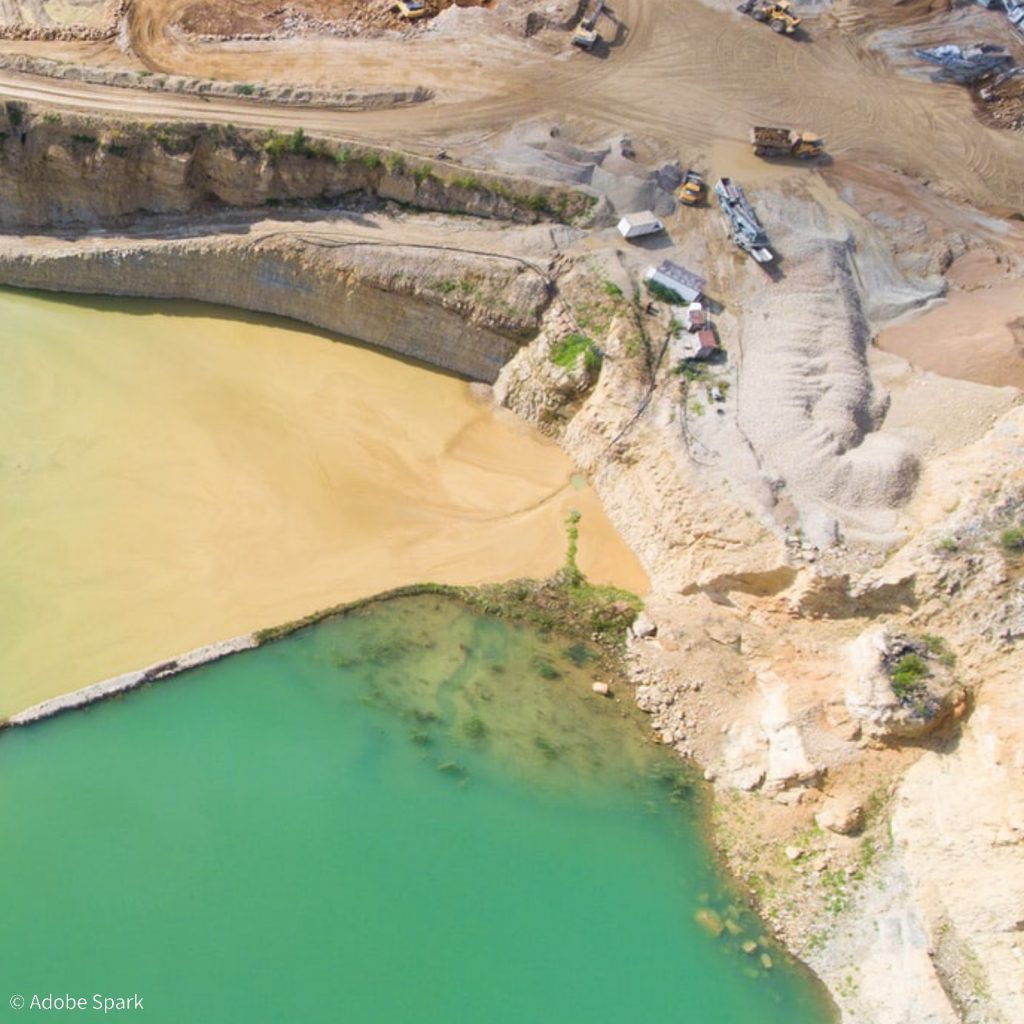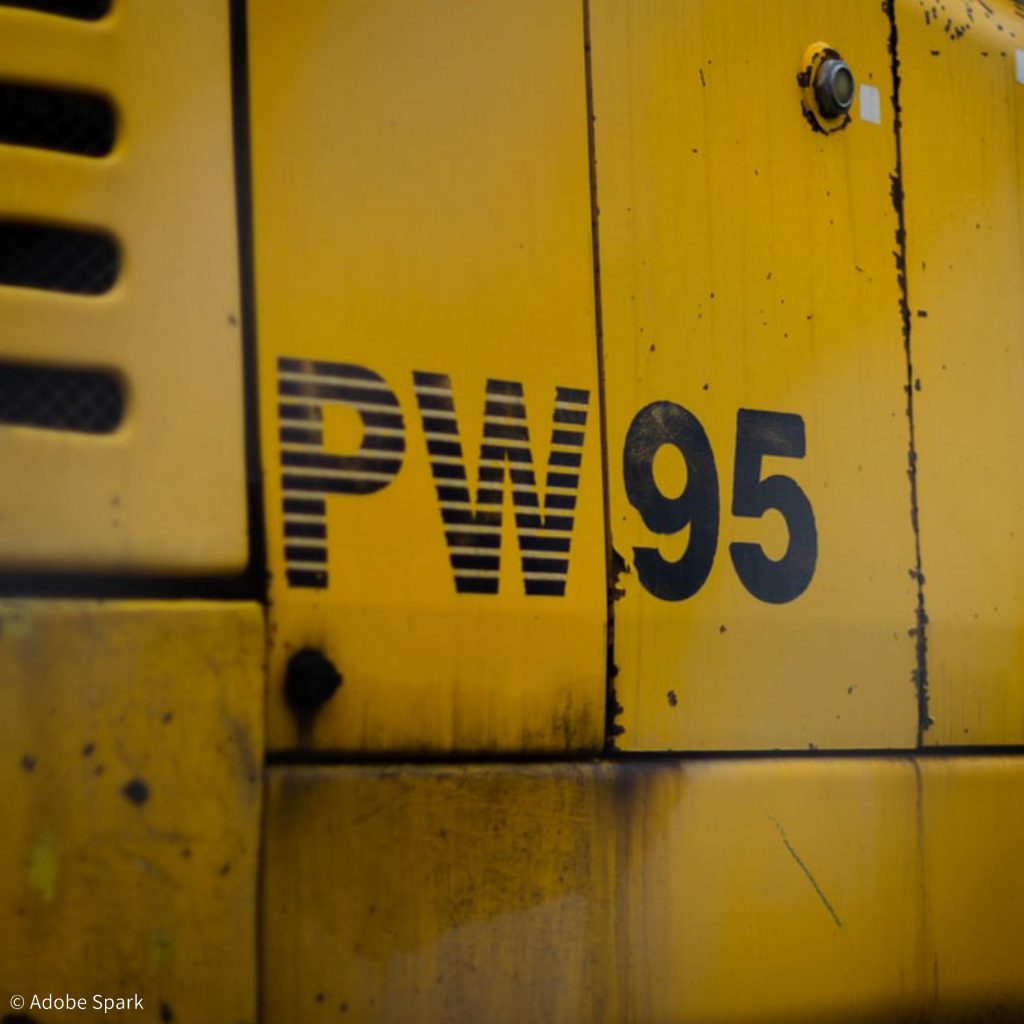What impresses me now and then is how sustainable my environmental protection studies were. That was 30 years ago now, but it still holds true. Not only was the CO2 crisis already a topic and solutions to the crisis were tought at that time, but also process engineering and the assessments of its environmental impacts are still valid. My professor’s conclusions for the extraction of gold were simple and quite unscientific. Alone the 20 tons of rubble that are produced to make the gold for a simple wedding ring are environmentally irresponsible. And then you haven’t even started to talk about the chemicals or the energy needed to extract the gold, or about the waste that has to be disposed of or monitored for decades.

The ore, which often contains less than one ppm (parts per million) gold, is crushed and mixed with sodium cyanide. Cyanides are highly toxic chemicals that can kill living beings in the smallest quantities in a very short time. The actual extraction process and subsequent disposal pose the greatest challenges. One would have to assume that in today’s time and with today’s modern facilities, such processes should not pose any danger. However, since the mining and extraction processes often take place in remote locations and under extremely primitive conditions, the operators elude the public and with it the responsibility. The same is true for the remaining waste that has to be stored afterwards. Exposed to the air, these produce sulphuric acid, which in turn dissolves heavy metals and facilitates their transfer to surface and groundwater. One speaks of acid mine drainage, which is why gold ore landfills are long-term, highly dangerous waste, which in terms of their hazardousness take second place after nuclear waste landfills. My professor had summarized it this way: Once you’ve been to a gold mine or gold extraction facility, you no longer believe that environmentally friendly gold extraction is possible. But, as said, everything is far away in the middle of nowhere.
In recent years, the Back Forty Gold Mine, along the Menominee River, which marks the border between Michigan and Wisconsin has been contested . On one side Aquila Resources, a young company that promises to organize everything properly and on the other side environmentalists and the Minominee Indian tribe, who want to preserve the region as naturally as possible. The dispute was conducted with the usual arguments and mutual distrust. Similar to the protests around the Dakota Access Pipeline, which would have had an effect on the resources of the Standing Rock Reservation, the cultural sensitivities of an indigenous tribe are affected here as well. Burial and religious sites, gardens and villages of the Menominee Indian tribe are located in the immediate vicinity of the future mine. Unlike other Native American tribes in the USA, the reservation of this tribe is only a few miles away from their original territory. The potential destruction of cultural artifacts would be all the more significant as they could date back to the foundation of the tribe. Often these help to regain forgotten knowledge about the tribe and to reconstruct the erased history of the people.

In the summer of 2018, the mine operator received the last necessary permit by the government of Michigan and the judicial possibilities have been largely exhausted, so that nothing actually stands in the way of the construction of the mine. However, the COVID-19 crisis has left its mark also on the mining industry, and it is doubtful that a company as young as Aquila Resources can raise the money for such a mine. In addition, Michigan’s Department of Environment, the Great Lakes, and Energy (EGLE) has rejected the safety plan for the dam that is supposed to keep waste from the Menominee River as incomplete. Legally, construction cannot begin at this time, even if the company were to raise the money. The reference to the catastrophic dam breach at Brumadinho in Brazil in 2019, which opponents of the mine repeatedly cited as a possible scenario, has so far been ignored in the public eye. However, this disaster appears in a new light after the collapse of two dams in the Midland of Michigan last year.
The failed Edenville and Sanford dams were for water retention, built of concrete and steel. The Back Forty-Tailings Dam will consist of crushed waste rock and debris. The question of how it will be able to withstand a 500-year flood is once again on the agenda. It is certainly difficult to find the right balance between the economic development of a structurally weak region, environmental protection and the cultural concerns of residents and indigenous people. But if the extraction of a metal is only worthwhile if environmental concerns are ignored, then I understand why horror scenarios have to be built on both sides.
More information can be found here:
Link: Coalition to Save the Menominee River, Inc.
Link: The Menominee Indian Tribe of Wisconsin
Link: Back Forty Mine
July 15, 2020 – by Klaus
